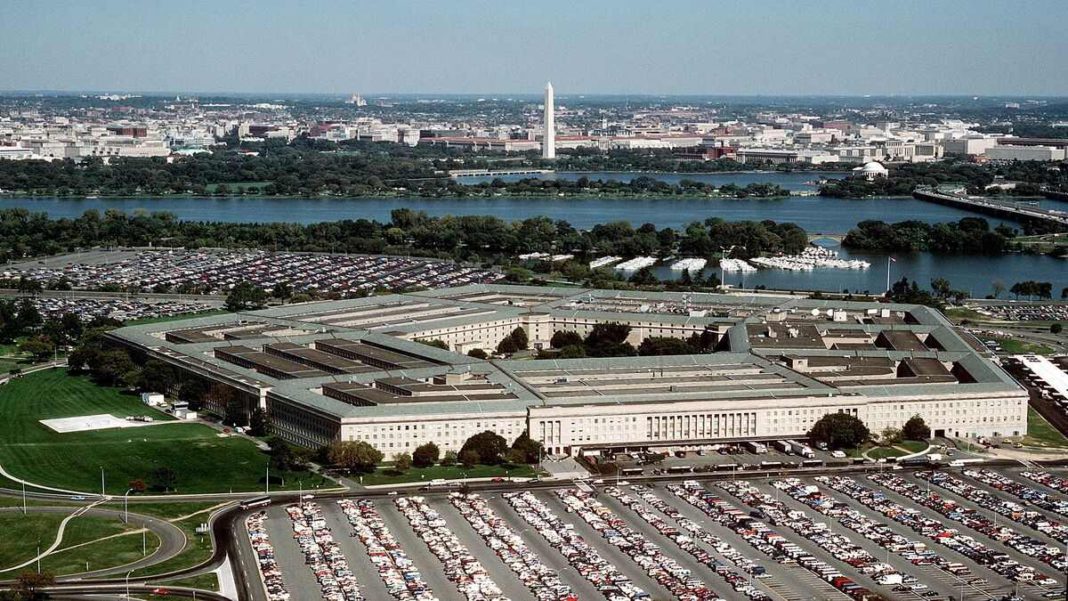UNITED STATES: US officials are attempting to determine the source of leaked classified documents containing information on everything from Israel’s Mossad spy agency to Ukraine’s air defenses. Some analysts suggest it may have been an American.
Officials say that the depth of subjects covered in the documents, which include the conflict in Ukraine, China, the Middle East, and Africa, suggests that an American rather than an ally may have leaked them.
“The focus is now on this being a US leak, as many of the documents were only in US hands,” said former senior Pentagon official Michael Mulroy in an interview with media outlets.
The leaked documents
The documents, some of which are designated “top secret,” provide a thorough account of the conflict in Ukraine, complete with timeframes and a bewildering array of military terminology.
They detail the deaths sustained by both sides, their respective military weaknesses, and—most importantly—what their likely relative strengths will be when Ukraine decides to start its eagerly awaited spring onslaught.
How authentic are these printed sheets that have been unfolded and captured on camera—possibly on someone’s dining room table? And what new information do they impart to the Kremlin or us?
First things first: this is the largest leak of classified American information about the conflict in Ukraine since Russia’s all-out invasion 14 months ago. Some of the records are up to six weeks old, but the implications are enormous.
The Pentagon authorities are quoted as saying that the documents are real. However, the documents’ veracity has not been independently verified by our team.
Information on at least one of them seems to have been hastily edited in a subsequent version, but out of a dump of up to 100 documents, that looks like a relatively minor detail.
In over 20 of the documents, they provide in-depth descriptions of the training and equipment given to Ukraine as it assembles a dozen new brigades for an offensive that may start in a matter of weeks.
It details the brigade readiness dates and enumerates every tank, armoured vehicle, and piece of artillery that Ukraine’s Western allies are supplying. However, it states that “equipment delivery times will impact training and readiness.” One map depicts a “mud-frozen ground timeline,” detailing how the terrain changes throughout eastern Ukraine as spring advances.
After a winter that put Ukraine’s air defences to the test, there is also a sobering study of Kyiv’s declining air defence capability as it tries to balance its limited resources to protect civilians, vital infrastructure, and its frontline troops.
The leaked documents talk extensively about the military situation in Ukraine and some of Washington’s other partners. The documents show internal disagreements regarding Ukraine and other delicate topics in countries ranging from Israel to South Korea. Some leaked documents are marked “top secret,” while others are to be disclosed only to the United States’ closest intelligence allies.
A lot of the information here is familiar. There is just more of it, and it is all in one place. Consider the casualty rates. It should come as no surprise that the US believes that between 189,500 and 223,000 Russian servicemen have been killed or injured.
The similar number for Ukraine’s losses, between 124,500 and 131,000, is likewise consistent with the range of data provided to journalists in recent weeks. In both situations, the Pentagon says it has “low confidence” in the figures due to informational gaps, operational security concerns, and purposeful deception attempts—probably made by both sides—to mislead.
Intriguingly, this is the only instance where attempts have been made to change the documents to make it appear as though Ukraine is suffering the most casualties.
Investigation behind the leaks
Aric Toler of the investigative open-source intelligence organisation Bellingcat has already described how the documents made their way from the messaging app Discord to 4Chan and Telegram.
Toler notes that it has not yet been feasible to identify the leaks’ original source but notes that they first appeared on a messaging platform used by gamers in early March.
On March 4, during an argument on the conflict in Ukraine on a Discord server popular with Minecraft players, one user commented, “Here, have some leaked documents,” before posting ten of them.
Although uncommon, this type of leak is not particularly uncommon. In 2019, papers about US-UK trade relations were posted on Reddit, 4chan, and other websites before the UK general election. Reddit said at the time that the documents’ provenance was Russia.
Another incident occurred last year when War Thunder gamers regularly disclosed private military documents, ostensibly to settle a dispute among themselves. The most recent leak is more damaging and sensitive.
Ukraine has scrupulously protected its “operational security” and cannot be pleased that such sensitive information has surfaced at such a crucial time. For the Zelensky administration, Ukraine’s spring offensive might be a make-or-break opportunity to change the battlefield dynamic and provide the framework for future peace negotiations.
Officials in Kyiv have discussed the possibility of a Russian disinformation effort. Contrarily, other military bloggers have asserted that everything is part of a Western scheme to deceive Russian leaders. Importantly, nothing in the leaked documents indicates the focus or direction of Ukraine’s counteroffensive.
The Kremlin should already have a good idea of the extent of Ukraine’s preparations, although Moscow’s intelligence failures have been prominent throughout the war. However, Kyiv needs to keep its adversaries guessing how the campaign will unfold to increase the likelihood of success.
Also Read: Tourists from France and Germany Ignore Britain after Brexit



